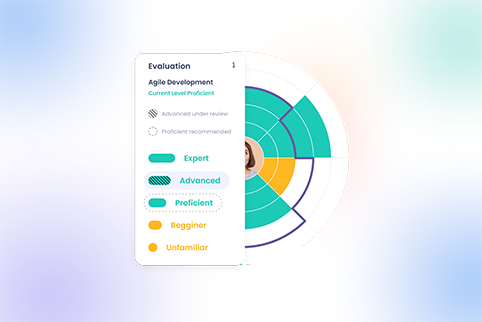
How to measure power skills development and progress in a world where change and continuous skilling, upskilling and reskilling are the only constants? Recently, CEOs of multiple companies lead a movement to educate their workforce, investing in employee development and education benefits.
Of course, buying and building capability libraries is helpful, but it isn’t enough to actually learn and master a new skill. So, what is the secret of a proper skills development measurement?
Soft Power skills vs hard skills
We are used to referring to skills as “soft” and “hard”. “Hard” skills are technical ones, job skills, or, in other words, skills you need to actually do your daily job. Whereas “soft” skills are the ones known as “people skills”.
The irony is that technical skills are relatively easier to learn and might become rapidly obsolete, especially in this fast-changing world, while “soft” skills are more complex and built over time, with a lot of effort. So let’s call them “power” skills. The intention is nowise to diminish the importance of technical skills – these are extremely important to be able to thrive and excel.
However, fortunately, these types of skills are also easier to measure on progress and development. Combining them with power skills instead you can achieve more. So, how do we measure progress on power skills’ development? The answer is not a simple and one-fits-all recipe.
Measure progress on power skills development
Reinvention and growth begins with skills mapping and then skills gap analysis. Begin by defining critical skills needs, make a current assessment and identify what you should start developing today to help you thrive tomorrow? Then, identify ways of shrinking the gap between current and desired levels.
Self-assessment and behavioral change through coaching
Approach power skills development by setting clear objectives and expectations. Create awareness and acceptance of the current state. For example, you decided to develop creativity. Now, when thinking where you genuinely are (not where you want to be!), on a scale from 1 to 10, how creative are you? What do you need to change to shift up that number by 0.5 or 1 point?
Building self-awareness will help keep track of progress, create an action plan and measure success. Take notes on situations you witnessed creativity – what helped you? How did the environment and context encourage or discourage it?
Action-effect surveys
Use action-effect surveys to gather 360 degrees constructive feedback on how behavioral change (in the example above – creativity) mirrors the perception of others around you. In other words, on one hand, assessing self-perception on the progress, and on the other hand, gathering observations and perceptions from people around you.
For instance, following the example above with developing the creativity skill, assess regularly action-effect surveys, with statements such as:
Your perspective: I can instantly think of 3 ideas to solve any problem.
Other people’s perspective: During this week I have used at least one innovative solution proposed by [your name].
Gather the results from all people you interact with more closely and then repeat the survey regularly, following and practicing what you committed to in your growth plan.
People analytics
Bring people analytics to help you measure relevant metrics. Here are two metrics you might consider, inspired from this Offbeat article:
- time to competency, which measures the time since you have been trained to develop a specific skill until you feel confident and proficient in practicing it;
- return on investment (ROI), or the ratio between the sum of all benefits in developing a new skill and the total cost of learning. This is not an easy metric to measure, especially when referring to power skills. However, having a clear objective (as mentioned above) will help you determine the impact of mastering this skill has on your life, relationships and work.
Final note
Measuring progress and mastery of power skills isn’t an easy process and it doesn’t have a one-fits-all recipe. What works for me, might be totally wrong for you. This is the reason why it is important to consider a holistic view: assessing self-perception, match it with a 360 degree view and blend it (when and if possible) with people analytics to get actionable insights.







